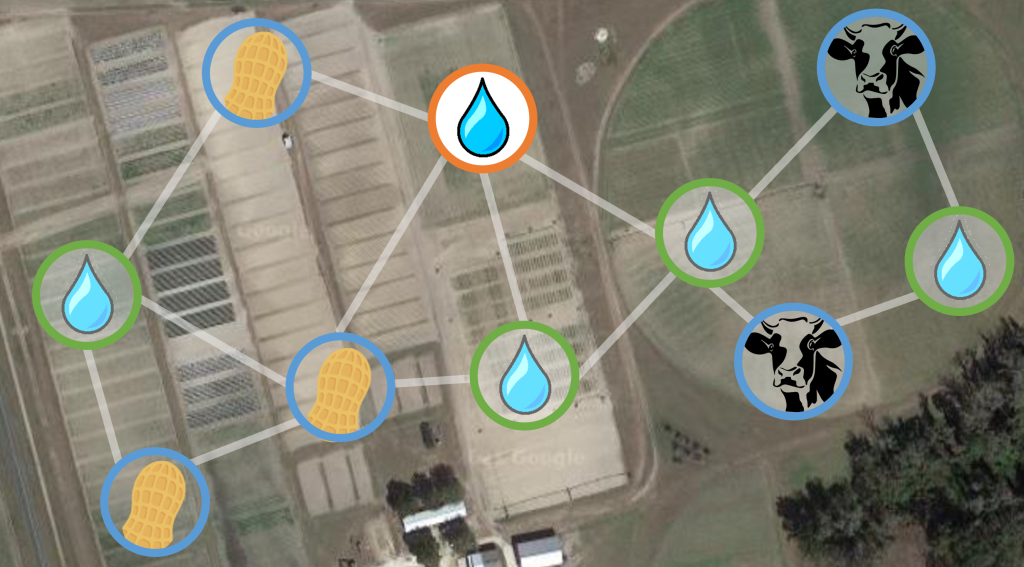Why AI Can’t Yet Grow a Perfect Crop Model

Disclaimer: this is an AI-generated article intended to highlight interesting concepts / methods / tools used within the SmartDATA Lab's research. This is for educating lab members as well as general readers interested in the lab. The article may contain errors.
The promise and pitfalls of using artificial intelligence to predict agricultural outcomes in a data-scarce world
Imagine trying to beat Elden Ring with only half the map, no health potions, and a sword that breaks every few swings. That’s roughly the challenge agricultural scientists face when applying artificial intelligence (AI) to crop modeling.
Crop models—like the venerable Decision Support System for Agrotechnology Transfer (DSSAT)—simulate plant growth, soil chemistry, and environmental interactions. They’re essential tools for predicting yields, managing fertilizers, and preparing for climate change. But these models are only as good as their inputs, and in agriculture, data is often scarce, noisy, or incomplete.
Enter AI, with its promise of pattern recognition and predictive prowess. Yet, integrating AI into crop modeling isn’t a plug-and-play solution. The fusion of data-driven algorithms with process-based models introduces a host of challenges that researchers are only beginning to navigate.
The Data Dilemma
AI thrives on data—vast, diverse, and high-quality datasets. In agriculture, however, such data is a luxury. Soil properties, weather patterns, crop phenology, and management practices vary widely across regions and seasons. Moreover, collecting this data is labor-intensive and expensive.
For instance, estimating soil mineral nitrogen (SMN) levels—a critical factor for crop growth—is notoriously difficult due to the complexity of nitrogen dynamics and the scarcity of field measurements. A recent study addressed this by integrating DSSAT simulations with a Long Short-Term Memory (LSTM) neural network to estimate daily SMN levels in potato fields with limited data. This hybrid approach leveraged the strengths of both models but also highlighted the challenges of combining mechanistic and data-driven methods.
Modeling Complexity: When Equations Meet Reality
Process-based models like DSSAT rely on equations that describe biological and physical processes. These models require detailed inputs and are sensitive to parameter uncertainties. AI models, on the other hand, learn patterns from data without explicit assumptions about underlying processes.
Combining these approaches can be powerful but also problematic. For example, if the process-based model’s outputs are inaccurate due to poor calibration, the AI model trained on these outputs may learn incorrect patterns. Conversely, AI models may capture spurious correlations that don’t reflect causal relationships, leading to unreliable predictions.
Moreover, the integration often involves high-dimensional data, where the number of variables exceeds the number of observations. This “curse of dimensionality” can lead to overfitting, where the model performs well on training data but poorly on new, unseen data. Techniques from linear algebra, such as singular value decomposition (SVD), can help reduce dimensionality and identify the most informative features, but selecting the right methods requires expertise and careful consideration.
The Need for Interpretability
In agriculture, model interpretability is crucial. Farmers and policymakers need to understand why a model makes certain predictions to trust and act upon them. Black-box AI models, which provide little insight into their decision-making processes, are less useful in this context.
Hybrid models that combine process-based and AI approaches offer a potential solution. By embedding domain knowledge into AI models or using AI to refine process-based models, researchers can create systems that are both accurate and interpretable. For instance, knowledge-guided machine learning integrates expert knowledge into the learning process, improving performance in data-sparse environments.
Towards a Synergistic Future
The integration of AI into crop modeling is not a silver bullet but a promising avenue that requires careful navigation. Success depends on addressing data limitations, ensuring model interpretability, and fostering collaboration between domain experts and data scientists.
As climate change and global food security challenges intensify, developing robust, accurate, and interpretable crop models becomes increasingly important. By combining the strengths of process-based models and AI, and by acknowledging and addressing their respective limitations, we can move towards more resilient and sustainable agricultural systems.
Key References on AI in Crop Modeling
- Gupta, R., Pothapragada, S. K., Xu, W., Goel, P. K., Barrera, M. A., Saldanha, M. S., Harley, J. B., Morgan, K. T., Zare, A., & Zotarelli, L. (2024). Estimating soil mineral nitrogen from data-sparse field experiments using crop model-guided deep learning approach. Computers and Electronics in Agriculture, 225, 109355. https://doi.org/10.1016/j.compag.2024.109355
- Shi, Y., Han, L., Zhang, X., Sobeih, T., Gaiser, T., Thuy, N. H., Behrend, D., Srivastava, A. K., Halder, K., & Ewert, F. (2025). Deep Learning Meets Process-Based Models: A Hybrid Approach to Agricultural Challenges. arXiv preprint arXiv:2504.16141. https://arxiv.org/abs/2504.16141arXiv
- Shahhosseini, M., Hu, G., Archontoulis, S. V., & Huber, I. (2020). Coupling Machine Learning and Crop Modeling Improves Crop Yield Prediction in the US Corn Belt. arXiv preprint arXiv:2008.04060. https://arxiv.org/abs/2008.04060arXiv
- Wu, J., Tao, R., Zhao, P., Martin, N. F., & Hovakimyan, N. (2022). Optimizing Nitrogen Management with Deep Reinforcement Learning and Crop Simulations. arXiv preprint arXiv:2204.10394. https://arxiv.org/abs/2204.10394arXiv
- Gautron, R., Padrón, E. J., Preux, P., Bigot, J., Maillard, O.-A., & Emukpere, D. (2022). gym-DSSAT: a crop model turned into a Reinforcement Learning environment. arXiv preprint arXiv:2207.03270. https://arxiv.org/abs/2207.03270arXiv
Agriculture Challenges Diversity Interpretability Physical Mismatch

